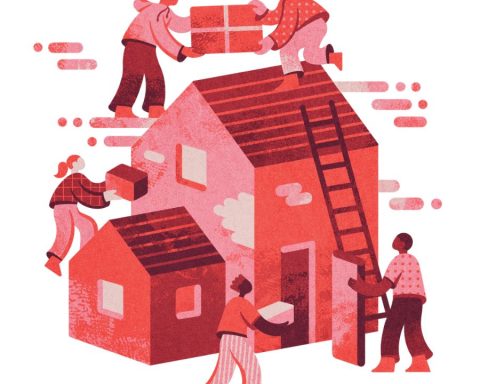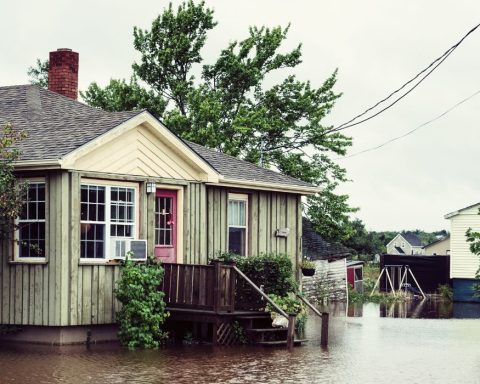As a form of property, the condominium is an exceptionally long-lived species, with evidence of buildings in ancient Babylon whose ground floors were owned separately from the rest of the structure. Despite the ancient pedigree, the view that prevailed over many subsequent centuries was that it made no sense to separate buildings into legally self-contained entities, much less divorce them from the land upon which they sat. After all, a building is a cohesive object, with common areas and infrastructure, as well as shared exposure to risks like fires or floods or deadbeat tenants. What could it mean to “own” the title to a cube of space in the sky that happens to be surrounded by walls and floors?
All that began to change in the 1950s in Puerto Rico, when legislators there enacted the first condo laws in response to chronic housing shortages. The idea of horizontal ownership – aka strata – spread rapidly, first to Utah, then many other U.S. states, and eventually Canada in the late 1960s. Legal recognition unlocked consumer interest, especially among lower-income households, as well as mortgages and capital for new projects.
In the early 1960s, many people in the United States did not know how to pronounce the word “condominium,” but by 1972 three out of four people knew the term, the scholar Donna Bennett observed in a 2011 paper in Law Library Journal. Today, there are about 7.4 million condos in the United States, accounting for 6% of all homes. In Canada, the proportion is far greater: 15% nationally, and even higher in cities like Vancouver (32.8% of all dwellings), Calgary and Toronto (both just under 24%).
The appeal acknowledges that most people prefer to own a home rather than rent an apartment. In a growing number of cities, the flow of capital for conventional apartment building projects began to thin in the 1980s, while demand for condo apartments expanded. In some markets, like Vancouver and Toronto, the condo model, which promised developers fast returns, came to dominate the purpose-built rental sector. Conventional private apartment complexes were sustained by rental income as opposed to the sales of individual units, and the landlords had to contend with all the headaches that come with managing large properties. The swap took about three decades, with the condo – both owner-occupied and those acquired by small-time investors – emerging in some markets as the undisputed winner in the competition for real-estate-bound investment capital.
I see it as a structural reset and a return to fundamentals.
– Brandon Donnelly, founder, Globizen Group
Such was the case until about the last year or so. Today, in many big cities like Toronto and Vancouver, as well as metros in Florida, Texas and California, the condo market is either way down or comatose. Developers can’t pre-sell new units, so they can’t secure construction loans, so their projects are iced, scrapped or converted into conventional apartment buildings.
Despite these convulsions, housing affordability continues to erode, not just in Canada and the United States, but also in the supposed housing havens in large European cities – with a few exceptions, such as Vienna, where the Austrian government heavily subsidizes rentals.
The blinding speed of the condo market’s collapse – evidence of a speculative bubble just waiting to burst – raises intriguing questions: Is the condo business model dead? And if so, what will replace it? After all, demand for more housing, and affordable housing in particular, hasn’t gone away, and someone’s eventually going to figure out how to meet all that need.
A changing narrative
Most condo industry leaders are in a white-hot panic about the collapsing market, but some have begun to acknowledge that the current condo business model is done, and not just in a cyclical funk. “I see it as a structural reset and a return to fundamentals,” says Globizen Group founder Brandon Donnelly, an Ontario developer.
In recent years, in frothy markets fuelled by financialization, developers marketed ever-smaller units in ever-larger towers to mom-and-pop investors who reckoned they’d make money in two ways: renting out the units as income properties and then selling them for a capital gain; or buying “pre-sale” units by making a five-figure down payment, waiting for the market price to rise, and then flipping them for a quick profit.
“The reason we had this big surge of condo development had to do with the fact that land zoned for high-density residential earned a greater return for condos than purpose-built rental,” says economist and planner David Amborski, director of Toronto Metropolitan University’s Centre for Urban Research and Land Development. “Basically, there was an investor opportunity on the condo side to buy these [units] and rent them.”
When interest rates plunged after the 2008 credit crisis, a gold-rush mentality set in. “The irrational exuberance around pre-sale condos that existed during very low interest rates, particularly in the Greater Toronto market, [from] 2019 through to 2023, was sort of the crystal meth of the condo years,” says Mark Richardson, an affordable-housing activist. And as in any other speculative bubble, sales grind to a halt when prices begin to drop because the expectation of price appreciation vanishes.
The condo narrative has played out differently elsewhere. Many U.S. metros have experienced long declines in their condo sectors because of regulatory barriers: federal mortgage rules preventing more than a certain portion of units to be acquired by investors, or regulations that put developers on the hook for structural defects for up to a decade – a consumer-protection measure that drove up prices (the developers had to buy a lot of insurance and fight a lot of legal battles) and depressed sales. As the Urban Land Institute reported in 2022, condo sales, as a proportion of all “multi-family” projects (i.e., apartment buildings) had sunk to their lowest level in half a century in the United States. Which is to say, back to the years when a few pioneering states were passing legislation establishing strata title.
The rise of the missing middle
There are glimpses of how new housing markets might take shape. Non-profits are getting back into the game, using public subsidies to co-sponsor affordable rental projects or acquiring condo apartments in for-profit projects and then sequestering them in land trusts that hold rents low and prevent speculation.
These have been accompanied by the much discussed “missing middle” zoning reforms that allow multiplexes or accessory dwelling units (i.e., small backyard houses, now popular in regions like California and Oregon) to be built in traditional residential neighbourhoods. As well, a younger generation of builders are looking to enter an industry long dominated by very large players with the capital to finance huge high-rises.
“I do see in my interactions with missing-middle developers a significant shift, and that shift might just have to be with a new generation versus an older generation,” observes Carolyn Whitzman, an Ottawa-based planning and housing researcher, adding that these next-gen builders are interested in more modestly scaled projects.

Some missing-middle advocates are pressing for reforms to North American building-code conventions that effectively prohibit “point access block apartments,” which are legal and ubiquitous in much of the rest of the world. These tend to be low-rise apartments constructed around a single stairwell/elevator shaft as opposed to the standard apartment building configurations in North America, which require long internal corridors with apartments on both sides with emergency exits at either end of a floor (the thinking is that every occupant should be able to reach an escape route in the opposite direction from a fire).
Such safety requirements produce buildings with smaller apartments that face only in one direction. Point access blocks, on the other hand, allow for more livable apartment layouts and enable developers to make more efficient use of space (i.e., no long corridors). Nor is there any evidence that they’re less safe. Some cities, such as New York, Vancouver and Los Angeles, are experimenting with code changes that allow point access block buildings, but their potential, in North America, remains nascent.
The question is whether missing-middle-type development can be accelerated sufficiently to address the need for housing. After all, the condo business model, for all its flaws, quickly generated a lot of apartments. Many housing experts are skeptical and don’t think missing-middle projects will fill the void left by the collapse of the condo industry. Others see a half-full glass: “Right now, there’s a lot of market interest in developing at smaller scales, which wasn’t the case pre-2022,” Donnelly says, citing the “critical” importance of more permissive zoning rules in traditional house neighbourhoods.
What will take over?
The candidate most likely to fill the gap, at least in larger Canadian cities, is large-scale purpose-built rental apartment buildings. In the past few years, deep-pocketed institutional investors, such as Quebec’s Caisse de dépôt public pension fund, have become increasingly committed to underwriting these apartments. Their ranks include public-sector pension funds that have also traditionally invested in malls.
In the United States, while there’s been some growth in the development of rental apartments, the builders of multi-family housing still battle NIMBYism, land-use restrictions and powerful tax incentives that encourage sprawl.
Building and owning rental apartment towers is a very different business than erecting condos. Because there are no small investors to buy individual units in advance of construction, as is the case with condos, apartment developers have to take on long-term mortgages, which means they need healthy balance sheets. It’s not an in-and-out type business. Yet apartment buildings generate exceptionally stable income streams, which appeal to institutional investors like pension plans or real estate investment trusts (REITs). They also tend to be better built than condo towers, Richardson notes. “The developers themselves have some skin in the game long-term.”
The rental market has a carbon problem – here’s how to solve it
Like almost all categories of residential real estate, the viability of rental projects has turned on certain public policies. In the case of apartment buildings in Canada, in the 1960s and 1970s, an obscure federal tax credit permitted investors to write off losses in their non-real-estate holdings against income generated by rental buildings. That measure attracted a massive amount of capital from smaller investors and underwrote an entire generation of slab apartment buildings in many large Canadian cities.
Mark Carney’s Liberals have promised to resurrect this tax break, and the federal government is also plowing billions in loans and loan guarantees into purpose-built rental projects that offer affordable rents to lower- and middle-income tenants. Given the moribund state of the condo business, where developers can’t start new projects because so few people are prepared to put down deposits on pre-sale units, Carney’s timing couldn’t be better.
Whether the rental sector surges, as it did half a century ago, remains to be seen. Donnelly feels the jury is out. “It’s hard to say because the development landscape is very much in flux right now. But the margins on new purpose-built rental projects are significantly tighter than what they were on new condominiums pre-2022. I don’t think we’ll see [purpose-built rentals] dominate in the way condominiums did unless the returns become more attractive.”
Yet, as Amborski notes, investors no longer see condos as a viable asset class that can generate better returns than the stock market or gold, which means all those dollars that flowed freely into tiny investor-owned units have gone elsewhere and may not return any time soon.
Donnelly is optimistic about the fact that the bursting of the condo bubble has driven out speculators, which is good news for people who want to live in the apartments they buy, and also for asset managers who want to invest in rental buildings. Without the condo sector, these firms will no longer be forced to compete for outrageously overvalued real estate with small-time investors looking to make a quick capital gain. “The focus going forward is going to be on meeting end-user demand,” he says. “This is a healthy thing for the market.”
John Lorinc is a journalist and author specializing in urban issues, business and culture.
The Weekly Roundup
Get all our stories in one place, every Wednesday at noon EST.






